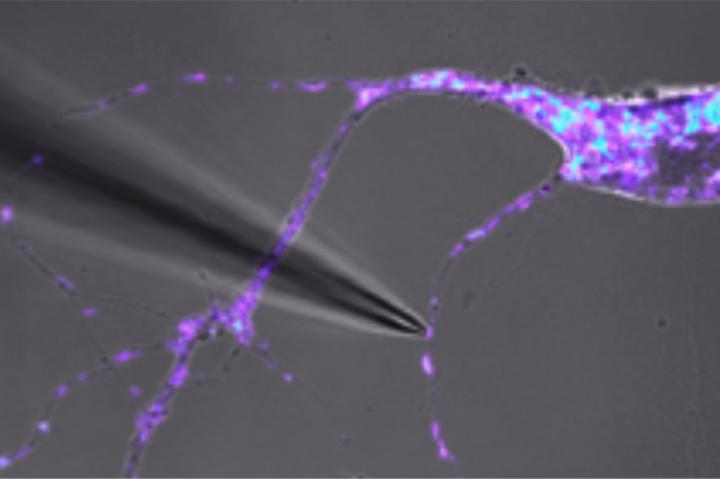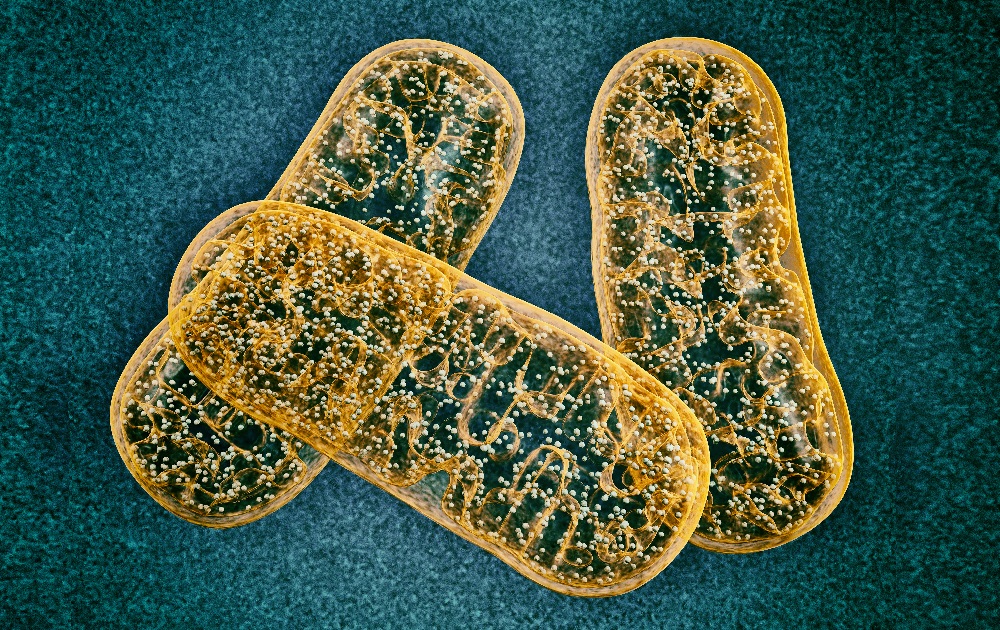Researchers Discover Key to Diseases in Mitochondrial DNA Mutations
Summary: New view on mitochondrial DNA could help put the brakes on mutations that drive diseases. [Author: Brady Hartman. This article first appeared on LongevityFacts.]
DNA sequences between mitochondria inside a single cell are vastly different, reported scientists in the Perelman School of Medicine at the University of Pennsylvania. This discovery will help to illuminate the underlying mechanisms of diseases that start with mutations in mitochondrial DNA and provide clues about how patients might respond to specific treatments. The researchers published their findings in the journal Cell Reports this week.
Mutant Mitochondrial DNA
Mitochondria are the tiny organelles that produce energy inside our cells. We have two types of DNA in our bodies, the DNA inside the nucleus of our cells, called nuclear DNA – which stores the vast majority of our genetic code – and a separate DNA inside the mitochondria called mitochondrial DNA (mtDNA).
Mitochondria play a crucial role in human health. Mitochondrial dysfunction is one of the hallmarks of aging, and other researchers have linked mitochondria to an array of metabolic and age-related diseases, including type 2 diabetes, Parkinson’s, Alzheimer’s, cardiovascular disease, and the slowdown in metabolism that occurs as we age.
Unlike nuclear DNA which you inherit from both parents, you inherit mtDNA, only from your mother. Mitochondrial DNA is small and circular and has about 16,500 base pairs that encode proteins specific to the duties of the mitochondria. Because the primary job of the mitochondrion is to produce energy, most of its genes are involved in pathways in the energy production process. Although it has a small genetic code, mtDNA contains the blueprints for building many of the enzymes and proteins that are needed to function in those pathways.
While each of the cells in our bodies carries only a single copy of our genome, a single mitochondrion can contain 10 or more different genetic codes, each arranged in a small circular chromosome inside the mitochondrion. Each cell in our body has hundreds to thousands of mitochondria.
A mutation in mtDNA leads to mitochondrial disease, which involves an energy deficit in organs such as the kidney, muscle, and brain. Moreover, researchers have shown that mitochondria play a significant role in cancer, and have found mtDNA mutations in various tumors, including those of the pancreas, lung, colorectal, ovaries, bladder, kidney, and breast.

UPenn Research Findings
The UPenn researchers isolated a single mitochondrion and then extracted its DNA. They compared mutations in a single mitochondrion in individual mouse and human neurons and found that mouse cells accumulated more mutations compared to human cells. The scientists concluded that mice accumulate mutations at a different rate than humans.
Senior author of the study James Eberwine, Ph.D., a professor of Systems Pharmacology and Translational Therapeutics, said that a significant take away of the study is to ensure that mitochondrial diseases or potential therapeutics in cells are examined in animal models where the mutations parallel those that occur in humans.
Over a lifetime, mutations in mtDNA accrue differently in each person. The study addressed similarities and differences in discrete mitochondrial DNA in the same cell and also between cell types such as astrocytes and neurons in the brain. As Professor Eberwine says
“By being able to look at a single mitochondrion and compare mutational dynamics between mitochondria, we will be able to gauge the risk for reaching a threshold for diseases associated with increasing numbers of mitochondrial mutations.”
For example, the findings of the study may improve diagnosis of neurological diseases, such as Alzheimer’s, potentially allowing doctors to detect cells that could become diseased or pinpointing patients who may develop certain conditions. This is particularly likely for diseases that commonly strike the elderly in which mutations in mtDNA accumulate with age.
In the future, the scientists plan to use this knowledge to find ways to slow the rate of accumulation of mutations in mtDNA in hopes of halting the progression of diseases. Professor Eberwine adds
“This roadmap of the location and number of mutations within the DNA of a mitochondrion and across all of a cell’s mitochondria is where we need to start.”
Show Us Some Love
- One click helps us spread the word – Share this post on social media and help us spread the word. It only takes a click on any of the social media links on this page.
- Follow us on social media – Google+|Facebook|Reddit.
- Sign up for our email list – We use your email to notify you of new articles. We will not send you spam, and we will not share your email address. You can cancel at any time.
- Tell us what you think – Scroll down to enter your comments below.
References
Cover photo: Wir0man / Getty Images.
University Of Pennsylvania School Of Medicine, “First DNA sequence from a single mitochondria.” [Press Release]. Via EurekAlert. Dec 5, 2017. Link.
Morris, Jacqueline, et al. ‘Pervasive within-Mitochondrion Single-Nucleotide Variant Heteroplasmy as Revealed by Single-Mitochondrion Sequencing” Cell Reports, Volume 21, Issue 10, p2706–2713, 5 December 2017, DOI:http://dx.doi.org/10.1016/j.celrep.2017.11.031. Alternate Link.
Disclaimer
Diagnosis, Treatment, and Advice: This article is intended for educational and informational purposes only and is not a substitute for qualified, professional medical advice. The information and opinions provided herein should not be used during any medical emergency or for the diagnosis or treatment of any medical condition. Experimental therapies carry a much higher risk than FDA-approved ones. Consult a licensed and qualified physician for the diagnosis and treatment of any and all medical conditions. Call 911, or an equivalent emergency hotline number, for all medical emergencies. As well, consult a licensed, qualified physician before changing your diet, supplement or exercise programs. Photos, Endorsements, & External Links: This article is not intended to endorse organizations, companies, or their products. Links to external websites, mention or depiction of company names or brands, are intended for illustration only and do not constitute endorsements.

3 Replies to “Researchers Discover Key to Diseases in Mitochondrial DNA Mutations”
Comments are closed.